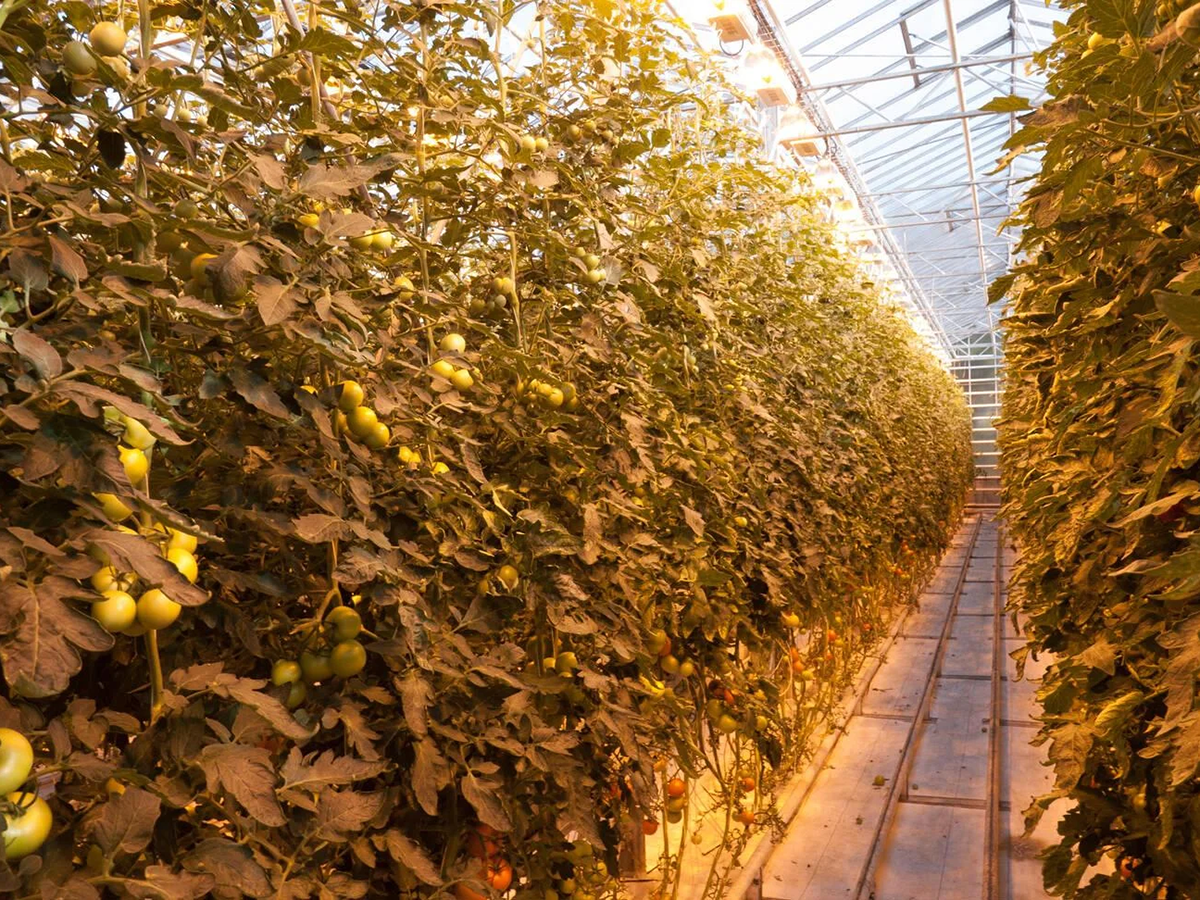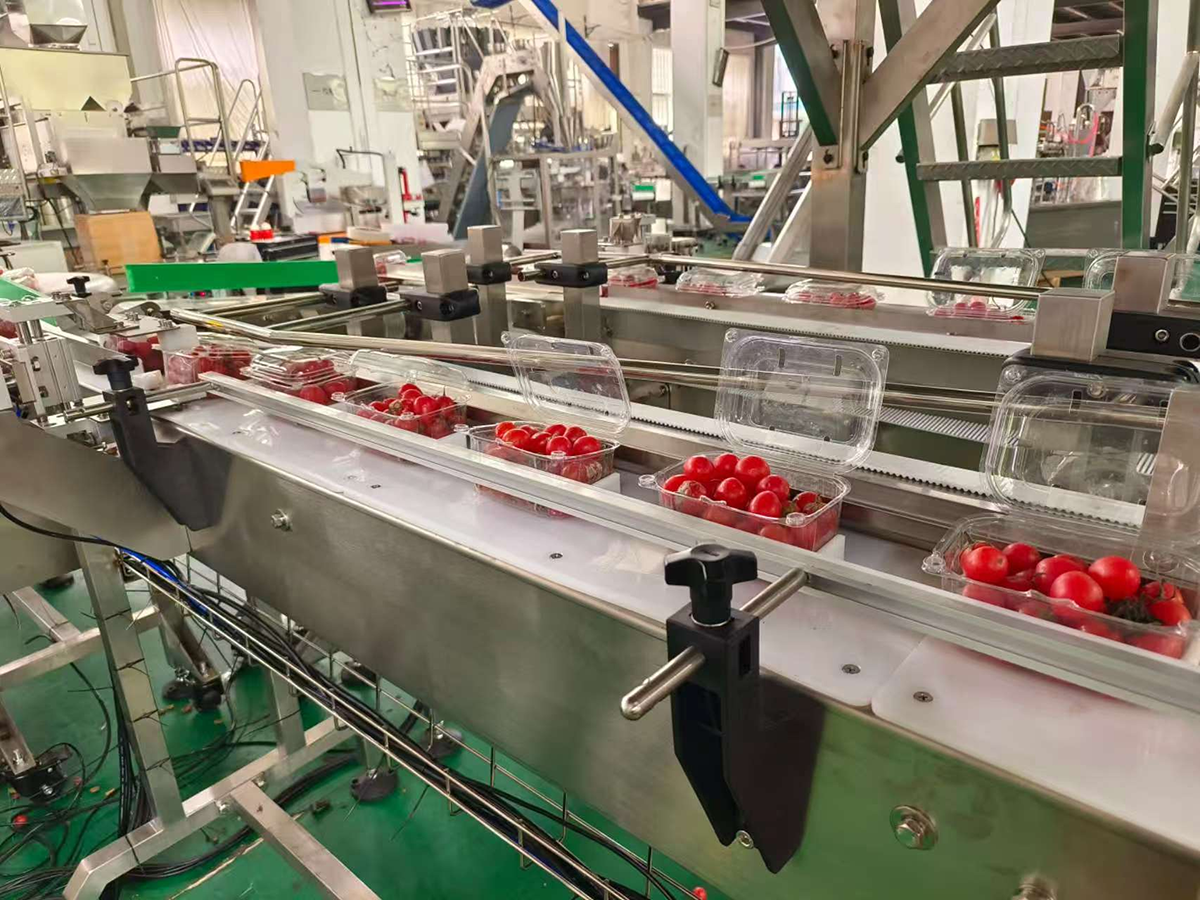The greenhouse uses the principle of “enthalpy-humidity diagram” to reduce energy consumption as much as possible. When the self-regulation cannot reach the set HVAC index, it uses heating, cooling, humidification, refrigeration and dehumidification equipment to make the greenhouse environment meet the needs of crop growth.
In winter and summer, make full use of indoor return air, maintain the minimum fresh air volume, save heat and cold, and reduce carbon dioxide loss.
Under winter night conditions, when the indoor relative humidity is higher than 90%, the traditional greenhouse is naturally ventilated by opening windows. Natural ventilation is the result of the combined effect of thermal pressure and wind pressure, which is difficult to control. Semi-enclosed greenhouses adjust equipment according to different outdoor meteorological parameters by calculating the dehumidification amount. Dry areas make full use of outdoor dry cold air, so artificial refrigeration energy is saved compared to high humidity areas.
In winter, when the condensation of greenhouse glass is greater than the evaporation of crops, humidification is required in most cases in the greenhouse, and the external windows are closed to reduce indoor and outdoor heat exchange.When cooling is required in summer, the outdoor dry air is humidified by micro-fog insulation to reduce the indoor temperature and increase the humidity.
Wet curtains can be used for insulation humidification and cooling in dry areas, which can greatly save initial investment.
In hot and humid areas, the outdoor temperature and humidity are both very high. Adiabatic evaporation cooling cannot be used for cooling and dehumidification. It is necessary to add refrigeration modules and artificial cold sources. When the dehumidification capacity is large and the supply air temperature is too low, it is also necessary to add artificial heat sources to reheat the cold air.


More intensive land use: The effective length of the wet curtain of the traditional greenhouse fan is 40 to 50 meters. To prevent air short circuit, a distance of 14 to 16 meters is required between the two greenhouses. The length of the semi-enclosed greenhouse can be increased to about 250 meters, and the uniformity of air supply is significantly increased.
Reduced heating demand: For arid and semi-arid areas, due to the reduced ventilation volume, the window area is reduced, the cold air penetration is reduced, the heat load is reduced, and the energy consumption is less.
Enhanced epidemic prevention ability: The indoor positive pressure can be controlled by adjusting the return air volume and exhaust air volume, and less pesticides are used, and the epidemic prevention ability is enhanced.
Carbon dioxide saving: The ventilation volume is reduced, and the return air is fully utilized, so that the crops can fully absorb indoor carbon dioxide, and the carbon dioxide consumption is reduced, which is half of the carbon dioxide consumption of traditional greenhouses.Environmental control is more accurate and convenient.
The semi-enclosed tomato greenhouse integrates intelligent environmental control and double-layer curtain system, and achieves 40% energy saving through light and heat coordinated management. The use of water and fertilizer recovery technology increases the yield by 35% and reduces energy consumption by 50%.



Construction costs range from $42-127/㎡ (steel structure: $21-43/㎡), covering climate control, soilless systems, and automation. The semi-closed design (side vents+pad-fan) ensures optimal ventilation, delivering annual yields of 30-50kg/㎡ with a 3-5 year ROI (tomato price: $0.85-1.7/kg), ideal for energy-efficient cultivation.
Email: tom@pandagreenhouse.com
Phone/WhatsApp: +86 159 2883 8120, +86 183 2839 7053
Media Contact
Company Name: Sichuan Chuanpeng Technology Co., Ltd.
Email: Send Email
Country: China
Website: https://www.pandagreenhouse.com/
